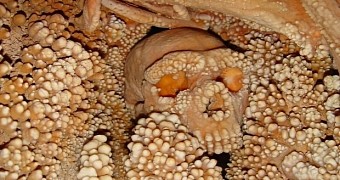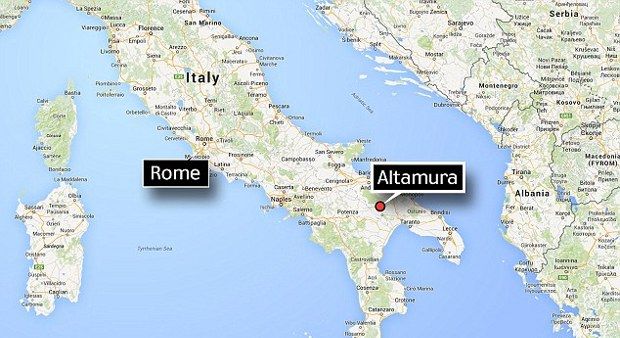Italy's Grotta di Lamalunga, a limestone cave located close to the city of Altamura, holds the remains of an ancestor of ours that lived and died hundreds of thousands of years ago.
The skeleton, shown in the photo accompanying this article and known to anthropologists as the Altamura Man, was discovered back in 1993 by group of researchers exploring Grotta di Lamalunga.
The reason it is still inside the cave and not on display at some museum in Italy or in some other corner of the world is that it is calcified and basically embedded in the cave's floor.
Otherwise put, there is no way anthropologists could pull it out of Grotta di Lamalunga without badly damaging it in the process. Hence, specialists interested in it prefer studying it in situ.
Dating the skeleton proved rather tricky
Seeing how the Altamura Man is embedded in limestone, researchers had serious trouble studying it and establishing its age. Still, they eventually determined a time frame for when this hominid lived.
In a recent paper in the Journal of Human Evolution, scientists at the University of Bari in Italy detail how, following an analysis of a small bone sample, they found the skeleton to be about 128,000 to 187,000 years old.
What's more, the researchers claim to have identified the skeleton as belonging to a Neanderthal, e genus that previous investigations have shown was widespread in Europe 200,000 to 40,000 years ago.
It is believed that this ancestor of ours died after having fallen through a well in the cave where it was found and having failed to free himself. It is possible that the fall also translated into several severe injuries.
A better understanding of our early history
Apart from allowing the University of Bari researchers to date the skeleton, the bone fragment recovered from the Altamura Man produced several DNA samples, Phys Org informs.
These bits and pieces of genetic material are said to be the absolute oldest DNA samples thus far recovered from a Neanderthal, and scientists hope that they might hold clues about our evolution.
“The skeleton from Altamura represents the most ancient Neanderthal from which endogenous DNA has ever been extracted,” the University of Bari specialists write in the report detailing their work.
Efforts are now being made to sequence the DNA samples. Whatever data the scientists obtain should shed new light on the evolution of hominids and especially Neanderthals.

 14 DAY TRIAL //
14 DAY TRIAL // 

